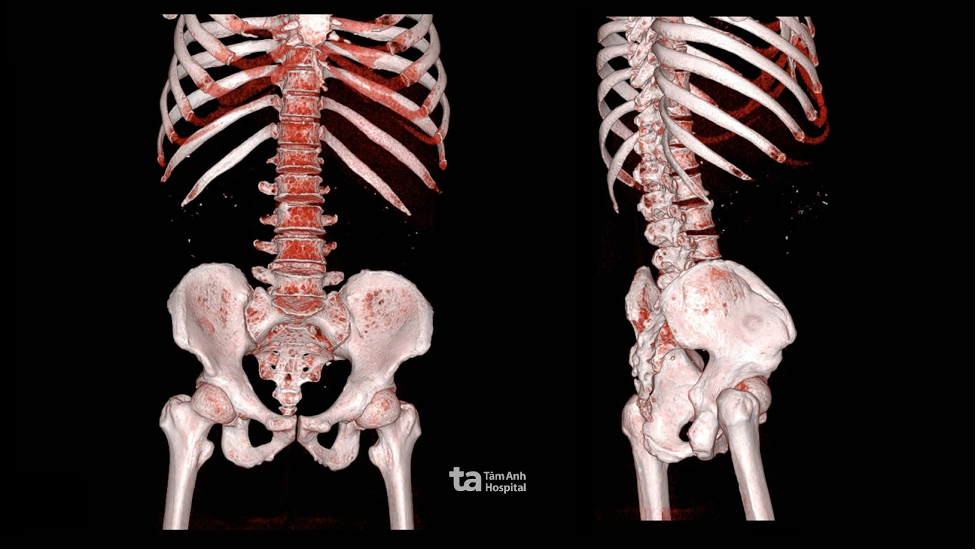Vu's blood and urine tests at Tam Anh General Hospital in Ho Chi Minh City revealed anemia and kidney abnormalities. Dr. Nguyen Quoc Thanh, Head of the Clinical Hematology Unit in the Department of General Internal Medicine, noted Vu's elevated blood protein level of 9,911 mg/dL (normal adult range: 6,000-8,300 mg/dL), suggesting an overproduction of antibodies and raising suspicion of multiple myeloma. A CT scan with over 100,000 slices confirmed typical bone lesions, including compression fractures in the T6, T7, T8, T10, T11, and L1 vertebrae, and multiple areas of reduced bone density in the lumbar, cervical, and thoracic spine, as well as the ribs—characteristic signs of multiple myeloma.
Multiple myeloma is a cancer originating in plasma cells, a type of white blood cell responsible for antibody production. When cancerous, these cells proliferate abnormally, crowding out healthy cells in the bone marrow. This disrupts blood cell production, causes multiple bone lesions, and leads to pathological fractures, kidney damage, and weakened immunity.
According to Dr. Thanh, multiple myeloma progresses silently with nonspecific symptoms, making it easily overlooked. Vu required a comprehensive, multi-disciplinary evaluation for accurate diagnosis.
 |
Vu’s CT scan with 100,000 slices clearly shows areas of reduced bone density, a sign of multiple myeloma. Photo: Tam Anh General Hospital |
Vu’s CT scan with 100,000 slices clearly shows areas of reduced bone density, a sign of multiple myeloma. Photo: Tam Anh General Hospital
Following consultation, doctors developed a chemotherapy regimen combined with targeted therapy. The treatment aims to eradicate malignant plasma cells in the bone marrow, control the disease, restore bone density, improve blood production, and preserve kidney function and immunity.
Dr. Thanh explained that the prognosis for multiple myeloma depends on the stage at diagnosis and treatment response. With modern chemotherapy and targeted therapies, patients like Vu, who are diagnosed before severe complications arise and respond well to treatment, can experience remission, improved health, and enhanced quality of life. Vu is expected to undergo 6 to 8 treatment cycles, with the duration depending on his clinical response and follow-up results.
 |
Dr. Thanh examines Vu during his treatment. Photo: Tam Anh General Hospital |
Dr. Thanh examines Vu during his treatment. Photo: Tam Anh General Hospital
Common symptoms of multiple myeloma include bone pain (especially in the back and ribs), anemia, kidney failure, high blood calcium levels, and recurrent infections.
Dr. Thanh recommends that adults, particularly those over 40, experiencing unexplained bone pain, persistent anemia, or prolonged fatigue, seek consultation at hospitals with hematology departments. Comprehensive blood tests, advanced imaging, and multi-disciplinary collaboration are essential for timely evaluation and treatment.
Trong Nghia
| Readers can submit questions about cancer here for doctors to answer. |












